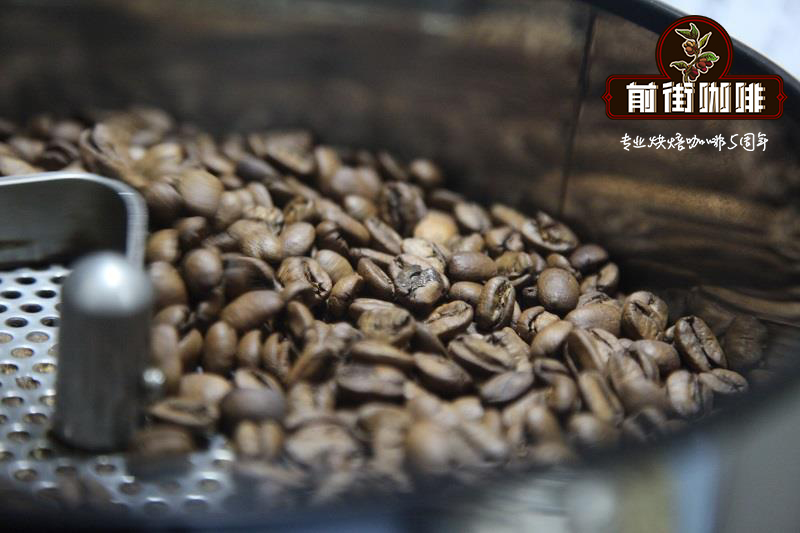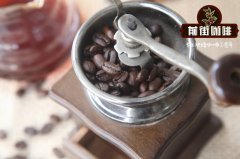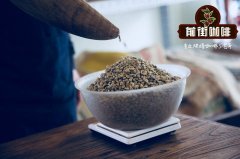The advantages and disadvantages of coffee flood cultivation machine how many flavors are there in different roasting degrees?
concept
However, during the roasting process of coffee beans, the transformation of ingredients is very complicated. After all, coffee beans are organic matter, so the transformation of this ingredient is very complicated and cannot be fully understood with modern organic chemistry knowledge.
However, the roasting of coffee beans directly determines the aroma of coffee beans. Bad roast coffee, even if the green beans are good, doesn't make good ripe beans; it certainly doesn't make good coffee. Only with good coffee beans, after proper roasting, it is possible to process good coffee beans, and it is also possible to provide a good prerequisite for making good coffee.
Roasting is roasting coffee beans at high temperatures, or roasting, to create coffee's distinctive color (approximately amber, depending on roasting), flavor, and aroma. Roasting changes the pale green (or pale yellow) coffee beans into the familiar dark brown coffee beans. High-quality roast refers to the raw coffee beans with flavor, sour, bitter ingredients skillfully expressed.
Among the factors affecting the taste of a cup of coffee, raw beans account for 60%, roasting accounts for 30%, extraction accounts for 10%, good roasting can bring the personality of raw beans to the extreme and minimize the appearance of defective taste, so it is particularly important to purchase a high-quality coffee bean roasting machine brand. Coffee roasters on the market are roughly divided into three types: 1, hot air coffee roasting machine
The hot air type bean dryer uses a blower to suck in air, and then let the air pass through a heating coil to raise its temperature. The hot air is used as a heating source to roast coffee beans. The hot air can not only provide the temperature required for roasting, but also use the power of the airflow to stir the coffee beans.
Advantages: high thermal efficiency, fast heating, raw beans heated more evenly, easy to control.
Disadvantages: Because of the high heating efficiency, it is easy to cause the temperature to rise too fast, causing the beans to be "uncooked", and the temperature to rise too high is easy to make the caramelization reaction insufficient.
Taste characteristics: acidity is obvious, taste is relatively clean and simple, but the richness of taste is not enough and lack of depth, and deep baking is easy to produce irritating taste. 2, direct fire coffee roasting machine
As the name suggests, direct fire is the direct heating of coffee beans with a flame. Evolution so far, the "fire" of direct fire in addition to the general flame (including gas fire and charcoal fire), but also includes infrared rays and electric heating tubes.
Advantages: baking time is longer, so that caramelization reaction is more sufficient, taste is richer,
Disadvantages: It is easy to cause uneven baking, and if the temperature is not well controlled, it is easy to burn coffee beans and form a bitter taste. 3, semi-direct fire semi-hot air coffee roasting machine
The baking method combining the advantages of direct fire and hot air is the mainstream of commercial baking machines at present. Semi-direct roasting is similar to direct roasting, but because there are no holes in the outer wall of the roasting container, the flame does not directly contact the coffee beans; In addition to this, an exhaust device is added to introduce the hot air outside the roasting container into the roasting chamber to improve the roasting efficiency. Another function of this exhaust device is to suck out the silver skin (film attached to the outer layer of coffee seeds), so as to prevent the silver skin from burning in the roasting chamber due to high temperature, thus affecting the taste of coffee beans. (Some so-called charred coffees help keep the silver skin out, leaving the beans with a smoky, scorched smell.)
Semi-direct fire semi-hot air machine has the advantages and disadvantages of direct fire and hot air, but according to the adjustment of hot air and boiler speed to change its heating mode. The larger the hot air is opened, the faster the rotation speed is, the closer it is to the hot air type; otherwise, the closer it is to the direct fire type. 1. Light Roast: degree of baking; very light baking, also known as light baking. The lightest degree of roasting of all stages, the beans have a light cinnamon color on the surface, and their taste and aroma are insufficient to make them almost inedible. It is usually used for testing and rarely used for tasting.
2. CINNAMON Roast: baking degree; light baking, also known as cinnamon baking. General roasting degree, cinnamon color on the appearance, odor green flavor has been removed, aroma is acceptable, strong acidity, for American coffee often used a degree of roasting.
3. MEDIUM Roast: baking degree; medium baking, also known as medium baking. Medium and light roasts belong to the American style. In addition to sourness, bitterness also appears, and the taste is good. Aroma, acidity, alcohol moderate, often used for mixed coffee roasting.
4, medium roast (HIGH Roast): baking degree; moderate slightly deep baking, also known as concentration baking. It belongs to medium and slightly dark baking, slightly stronger than medium baking, with a little dark brown on the surface and a stronger bitter taste. Coffee tastes sour and bitter, aroma and flavor are good, most often loved by Japanese and Central European people. Blue Mountain Coffee
5. City Roast: baking degree; medium deep baking, also known as city baking. The most standard roast, bitter and sour to achieve a balance, often used in French coffee. (Brazil, Colombia)
6, deep baking (FULL-CITY Roast): baking degree; micro-deep baking, also known as deep city baking. The medium and deep roasting degree is slightly stronger, the color becomes quite dark, and the bitter taste is stronger. It belongs to the Central and South American roasting method, which is very suitable for brewing all kinds of iced coffee.
7. French Roast: degree of baking; deep baking, also known as French baking. Also known as French or European roast, belongs to deep roast, color is dark tea color, sour has not felt, especially in Europe to France the most popular, because fat has penetrated to the surface, with a unique aroma, very suitable for coffee Oulei, Vienna coffee. Extraction accounts for 10%, good roasting can bring the personality of raw beans to the extreme and minimize the appearance of defective taste, so it is particularly important to purchase a high-quality coffee roaster brand. Among the factors affecting the taste of a cup of coffee, raw beans account for 60%, roasting accounts for 30%, extraction accounts for 10%, good roasting can bring the personality of raw beans to the extreme and minimize the appearance of defective taste, so it is particularly important to purchase a high-quality coffee bean roasting machine brand. For more professional coffee exchanges, please scan the code and follow WeChat: IMAKECOFFEE

Important Notice :
前街咖啡 FrontStreet Coffee has moved to new addredd:
FrontStreet Coffee Address: 315,Donghua East Road,GuangZhou
Tel:020 38364473
- Prev

There are several common cutters in bean grinders. What's the difference between them?
The advantages and disadvantages of the flat knife: the flat knife grinder is composed of the upper and lower cutter heads, and the base is fixed on the motor. When the motor starts, it rotates the upper and lower cutter heads to produce cutting action. When the coffee particles fall from the middle, the knife head rotating at the bottom will spin the coffee beans to the outside and push the coffee beans into the tooth cutter part for grinding. The upper and lower cutters of the flat knife are placed in parallel, so the coffee beans need to rely on
- Next

What are the picking methods of coffee beans?
Pruning and stripping in mountainous areas, due to the inability to use large machinery, people are still using manual picking method, of which the most efficient is pruning and stripping method. Like machine picking, this method lacks accuracy. Although the cost of the equipment is not high, it still needs to be sorted after picking to pick out immature fruits and sundries. Hand-picked for high-quality coffee, hand
Related
- Beginners will see the "Coffee pull flower" guide!
- What is the difference between ice blog purified milk and ordinary milk coffee?
- Why is the Philippines the largest producer of crops in Liberia?
- For coffee extraction, should the fine powder be retained?
- How does extracted espresso fill pressed powder? How much strength does it take to press the powder?
- How to make jasmine cold extract coffee? Is the jasmine + latte good?
- Will this little toy really make the coffee taste better? How does Lily Drip affect coffee extraction?
- Will the action of slapping the filter cup also affect coffee extraction?
- What's the difference between powder-to-water ratio and powder-to-liquid ratio?
- What is the Ethiopian local species? What does it have to do with Heirloom native species?

